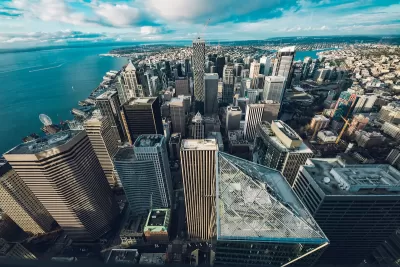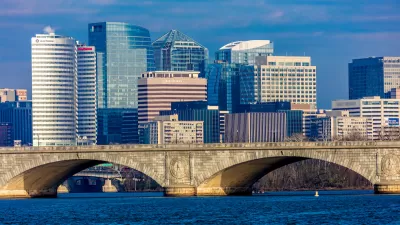Despite city and state incentives, officials expect the program will result in a modest number of new housing units.

A new Seattle city law reduces development requirements for office-to-residential conversion projects, reports Ysabelle Kempe in Smart Cities Dive.
Average residential rents grew by 32 percent between 2012 and 2022, while Seattle’s office vacancy rate jumped to 25 percent earlier this year, up from 5 percent in 2019. “The law, signed by Mayor Bruce Harrell on Thursday, allows developers who convert buildings to housing to skirt design development standards and avoid requirements to include affordable housing.”
The city’s Office of Planning and Community Development says it expects the law will result in ‘less that a dozen’ projects over the next seven years that could produce 1,000 to 2,000 housing units due to the challenges of adaptive reuse.
Goals of the adaptive reuse program, according to the city, include a “more balanced use mix of housing and commercial uses in downtown,” avoiding long periods of building vacancy, and the revitalization of downtown neighborhoods.
FULL STORY: Seattle encourages office-to-residential conversions with new law

Planetizen Federal Action Tracker
A weekly monitor of how Trump’s orders and actions are impacting planners and planning in America.

Trump Administration Could Effectively End Housing Voucher Program
Federal officials are eyeing major cuts to the Section 8 program that helps millions of low-income households pay rent.

The 120 Year Old Tiny Home Villages That Sheltered San Francisco’s Earthquake Refugees
More than a century ago, San Francisco mobilized to house thousands of residents displaced by the 1906 earthquake. Could their strategy offer a model for the present?

Op-Ed: Looking for Efficiency? Fund Intercity Buses
Much less expensive than rail, intercity buses serve millions of Americans every year, but public subsidies are lacking.

Philadelphia Councilmember Proposes Transit Access Fund
The plan would allocate 0.5 percent of the general fund toward mobility subsidies for low-income households.

Texas Bill Would Ban Road Diets, Congestion Pricing
A Texas state senator wants to prevent any discussion of congestion pricing and could suspend existing bike lane and sidewalk projects.
Urban Design for Planners 1: Software Tools
This six-course series explores essential urban design concepts using open source software and equips planners with the tools they need to participate fully in the urban design process.
Planning for Universal Design
Learn the tools for implementing Universal Design in planning regulations.
Ada County Highway District
Clanton & Associates, Inc.
Jessamine County Fiscal Court
Institute for Housing and Urban Development Studies (IHS)
City of Grandview
Harvard GSD Executive Education
Toledo-Lucas County Plan Commissions
Salt Lake City
NYU Wagner Graduate School of Public Service





























